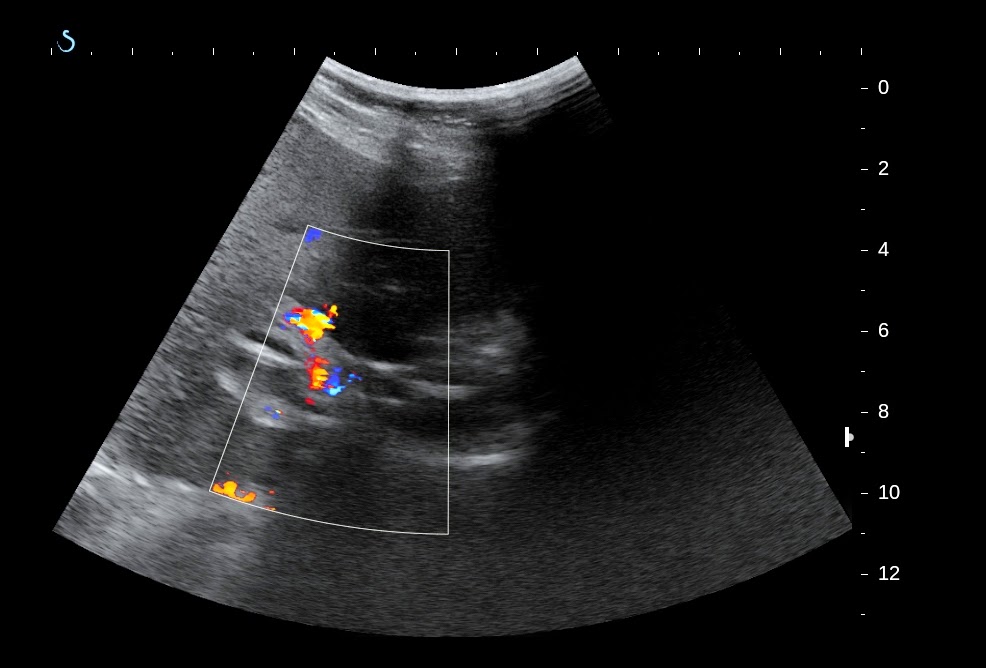XIN DOWNLOAD THEO LINK ĐỂ THẤY HÌNH
case-299-portal-vein-foreign-body
Woman 65 yo, epigatric pain for one week, cannot eat and no fever.
case-299-portal-vein-foreign-body
Woman 65 yo, epigatric pain for one week, cannot eat and no fever.
Ultrasound of abdomen
in decubitus position detected vena porta thrombosis and some
white lines intra portal vein which came from the
wall of gastric antrum (see 4 ultrasound pictures in
ventral view).
For clear viewing of portal vein we scanned the liver by sitting position and
dorsal view.
Portal vein was in distension, no flow due
to thrombosis, and in crossed section of portal vein we detected a white foreign body.( 2 pictures with sitting position
scan ).
MSCT with CE
for evaluation portal vein found out the foreign body which length of
5 cm intra left branch of portal vein and one another end was intra gastric antrum wall.
The foreign body was
covered by thrombosis intra left branch of portal vein (see 3
CT images).
Blood tests confirmed infection with rising WBC and high CRP, no abnormal coagulation test.
With the
past history of ultrasound scanning in ventral and dorsal views, MSCT and blood
tests, the first choice of diagnosis was intraportal vein foreign body, which was liked toothpick in penetration the gastric
wall and entering liver to left branch of portal vein, that caused portal vein thrombosis.
What is your
suggestion and planning of treatment for the female patient?
FEEDBACK=
An anouncement about case 299 of MEDIC on Google web after the case was posted for 30 minutes.
Operation this case by open laparotomy detected one bonefish with length of 5 cm which penetrated the duodenum to left lobe of liver and entering the vena porta left branche.
Removing bonefish and sutured duodenum.
FEEDBACK=
An anouncement about case 299 of MEDIC on Google web after the case was posted for 30 minutes.
Removing bonefish and sutured duodenum.






































